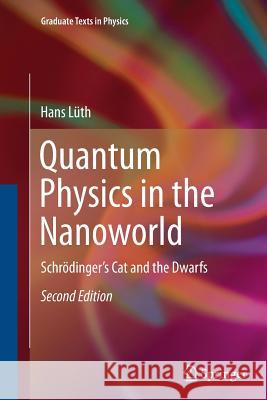Quantum Physics in the Nanoworld: Schrödinger's Cat and the Dwarfs » książka
topmenu
Quantum Physics in the Nanoworld: Schrödinger's Cat and the Dwarfs
ISBN-13: 9783319342658 / Angielski / Miękka / 2016 / 508 str.
Quantum Physics in the Nanoworld: Schrödinger's Cat and the Dwarfs
ISBN-13: 9783319342658 / Angielski / Miękka / 2016 / 508 str.
cena 232,90 zł
(netto: 221,81 VAT: 5%)
Najniższa cena z 30 dni: 231,29 zł
(netto: 221,81 VAT: 5%)
Najniższa cena z 30 dni: 231,29 zł
Termin realizacji zamówienia:
ok. 20 dni roboczych.
ok. 20 dni roboczych.
Darmowa dostawa!
Kategorie BISAC:
Wydawca:
Springer
Seria wydawnicza:
Język:
Angielski
ISBN-13:
9783319342658
Rok wydania:
2016
Wydanie:
Softcover Repri
Numer serii:
000394232
Ilość stron:
508
Waga:
0.72 kg
Wymiary:
23.39 x 15.6 x 2.69
Oprawa:
Miękka
Wolumenów:
01
Dodatkowe informacje:
Wydanie ilustrowane











